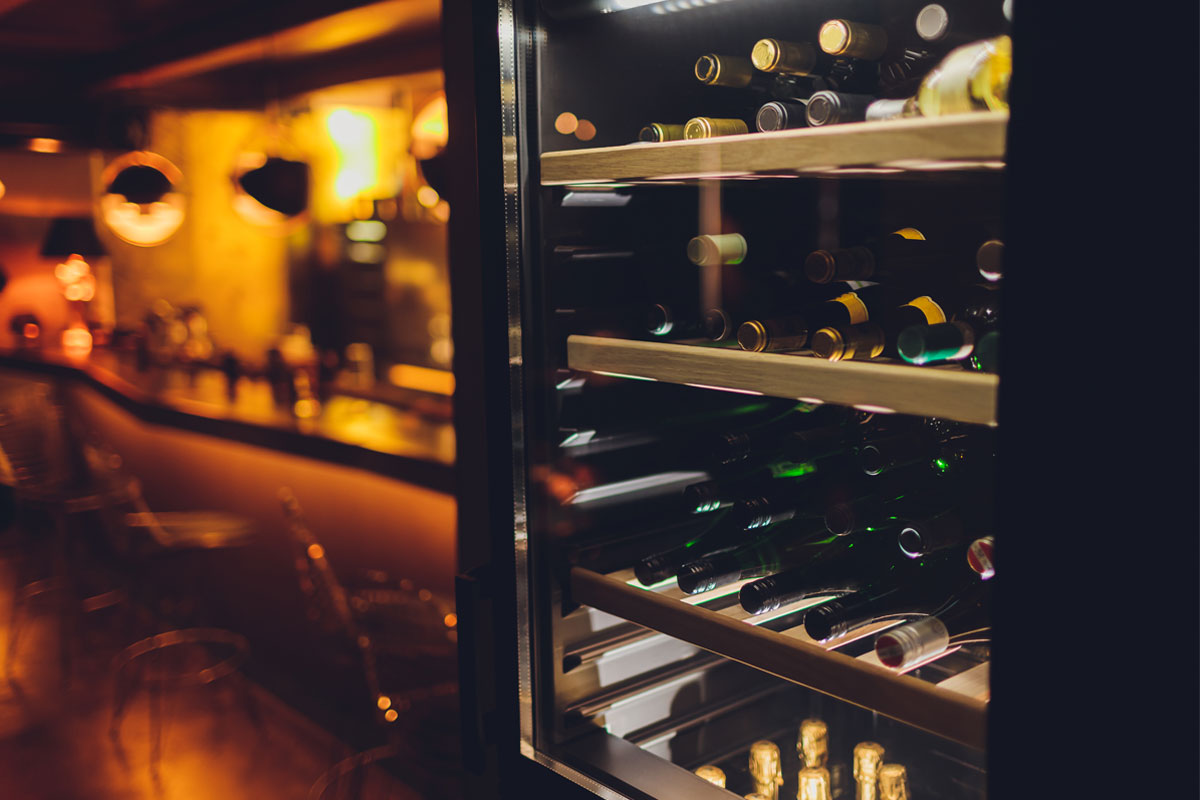Whether you are a serious wine aficionado, a long-time hobbyist, or are just beginning a journey along the path of wine-loving, you’re going to need a wine cooler.
The best wine coolers keep your wine safe, secure, and aging correctly.
Here’s a roundup of some of the best wine coolers on the market. And make sure to check out the Features and FAQ sections of this Buyer’s Guide for more information on why a regular fridge simply won’t do.
The Best Wine Cooler
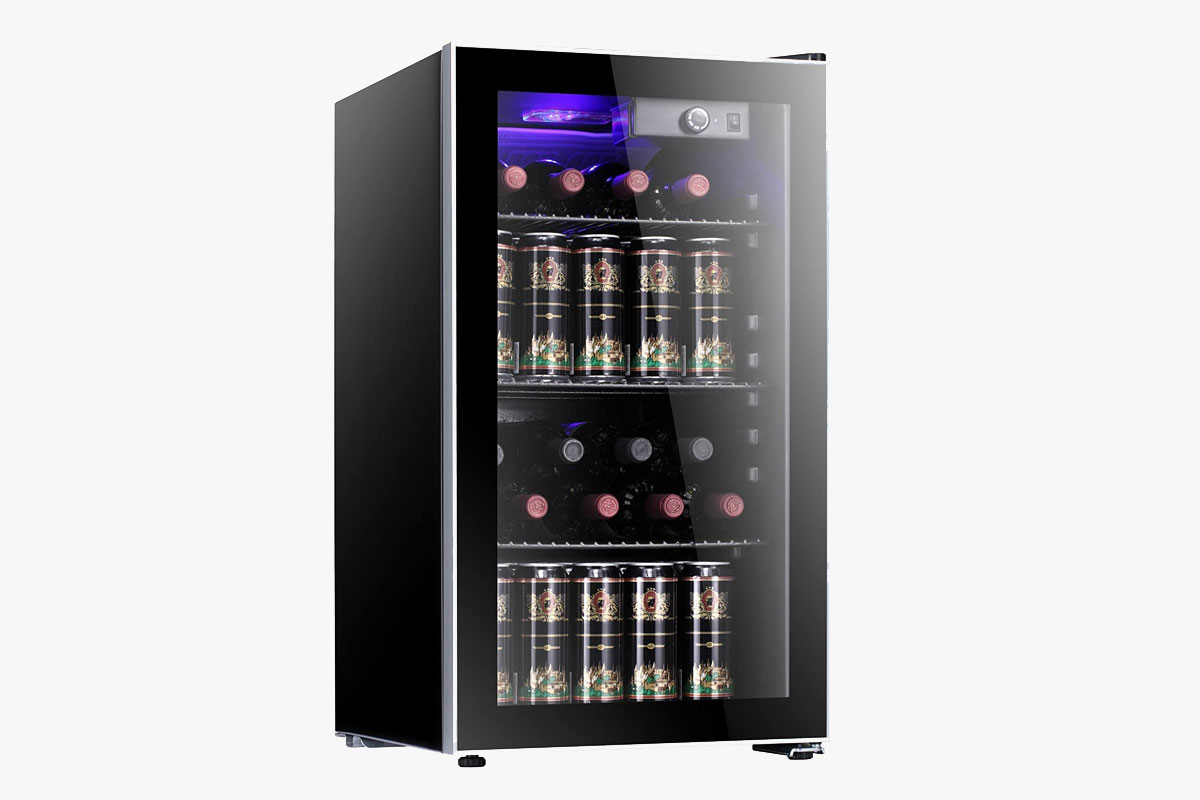 Antarctic Star 26 Bottle Wine Cooler (BEST CHOICE)
Antarctic Star 26 Bottle Wine Cooler (BEST CHOICE)
This Antarctic Star 26 Bottle Wine Cooler is our Best Choice for a few reasons. It’s reasonably priced, holds a fair amount of bottles, and is stylish to boot. We like the soft blue LED light to accent the bottles (don’t worry, it won’t damage the wine).
The storage is well-dialed. This cooler holds 26 standard red or white wine bottles horizontally. We also like the adjustable shelves because you can move them around to accommodate breakfast beer cans and other beverages.
With a temperature range of 40 to 60 degrees, low-vibration operation, and ideal humidity levels, this cooler has all the things you need to keep your wine safe. The glass window has dual panes and UV-blocking qualities as well.
You can control the temperature with a simple knob. Keep in mind this is a freestanding model. It is not for built-in use. With that in mind, you have access to level legs at the front of the cooler. The door will close more easily if you extend the legs.
The Colzer Upgrade 15 Inch Wine Cooler is another standout model. A temperature range of 41 to 72 degrees is a little wider than our last model, and we like the elegant styling of the adjustable beechwood shelves. Another plus here is the capacity — this cooler can hold 30 standard sized wine bottles in a horizontal configuration. The adjustable shelves mean you can store larger bottles if you want. You also get a cool blue LED light for accenting and showing off your bottles. One-touch digital operation and a child safety-lock are nice ancillary features. Still, it’s the three-panel glass door and carbon filter that stand out for their wine-protection qualities. You can expect this cooler to have a lifespan of 8-10 years. As a final touch, this cooler can be installed under a cabinet or used as a freestanding model. It’s fairly expensive, but you get a lot of utility and features for that price. This model is the first dual-zone cooler on our list. Why does this matter? Because dual-zone coolers allow you to store different types of wines in the same fridge. The upper zone has a temperature range of 41 to 55.4 degrees, perfect for dry whites. The lower zone has a range of 55.4 to 64.4 degrees, ideal for full-bodied whites and light reds. The dual-fan circulating system chills the cooler quickly, so you can get your wine stored soon after installation. And speaking of installation, this model functions as both a freestanding and built-in wine cooler. Beechwood shelves and stainless steel construction add a touch of class to the dual-pane window, while a safety lock keeps children and teens out. A blue LED gently illuminates the interior. The final touch is the temperature memory function, which will automatically restore the previously set temperature if your house suffers a temporary power loss. This feature is super-handy for frequent travelers. Wavy stainless steel shelves and a sleek, modern design draw the eye to this wine-cooler. The freestanding design and smaller capacity are perfect for counter-tops, offices, and other small spaces. Four horizontal wine racks hold up to 12 standard bottles, while a bottom rack nicely displays three additional bottles. This offering is reasonably priced but lacks the size and advanced temperature and humidity controls of some of our previous options. But it does feature a temperature range of 41 to 64 degrees and a control panel locking feature to keep children from accidentally changing settings. A digital soft-touch control panel and interior LED illumination round out the feature-set. Storage capacity is the name of the game with the Ivation 51 Bottle wine cooler. As the name indicates, you get 51 bottles worth of storage here — enough to keep a wide variety of types and vintages for every conceivable need. We like the modernist styling–black panels, smoked UV-resistant double-paned glass, and the clean digital interface. The temperature range is a respectable 41 to 64 degrees, and a locking feature on the control panel keeps your settings from being accidentally disturbed. As with most of the coolers on our list, this cooler features a soft LED light for beautifully displaying your bottles. Removable racks allow for maximum customization, while a built-in lock (with two keys) keeps your wine nice and safe. This Phiestina wine cooler stands out for its multi-use functionality. Want a freestanding cooler? You got it. How about built-in installation? Done. Reversible door hinge? Sure, why not? You can install this thing anywhere. The dual-temperature zone design further adds to the utility — the upper zone ranges from 40 to 50 degrees, while the lower zone goes from 50 to 60 degrees. The blue LED interior lighting is fairly standard, but the stainless steel trimmings give the cooler an air of a sleek modernist design. The shelves slide out for easy wine bottle retrieval (you can store 29 bottles in this thing), while push-button controls and a digital readout combine the best of mechanical and digital technology. Technically a freestanding model, this hOmeLabs 43 Bottle High-End Wine Cooler features front ventilation, so you could install it under a cabinet if you wish. The styling is a little plain, with stainless steel accents and a square, blocky build. The removable beechwood shelves are wide and block most of the bottles from view. The feature-set makes up for the lack of visual flair. This cooler can hold up to 43 bottles of wine in its removable beechwood shelves. The white interior LED is a nice change of pace from the usual blue, and the digital control set is touchscreen. On top of all that, this is a dual-temperature model. The upper zone ranges from 41 to 57 degrees, and the lower zone goes from 50 to 64 degrees. The reversible swing-door is double-layered and UV-resistant. The reversible function is useful as it allows you to choose from a wide variety of installation locations throughout your house. A built-in lock with two keys keeps your wine secure. This cooler also features a door beeper that will let you know if the door has been left open for more than two minutes. This tall and skinny offering from NutriChef stands out from the other coolers on our list simply because of its shape. It’s also one of the smallest coolers here. It holds 12 bottles on its contoured wire racks, four stored horizontally, and two stored vertically on the bottom rack. This model is designed for freestanding use only. It’s no surprise that you only get one temperature range zone in a cooler this size. Still, it’s a reasonably useful 41 to 64-degree range, allowing you to store either whites or reds, with no issues. The digital control panel is basic, and this cooler lacks the locking mechanisms and double-paned glass of some other models. What it lacks in features and size, it makes up for in price. This affordable little cooler is an excellent choice for entry-level hobbyists. This 20-bottle wine cooler stands out for its lack of window — the only such model in our buyer’s guide. As such, it’s more of a practical piece, not designed to display wine elegantly in your kitchen or study. It’s probably best if you are planning on storing your collection in a basement or spare room. Still, the polished, black-tinted mirror-glass face might be appealing to those with a minimalist aesthetic. You only get one temperature range here, 46 to 65 degrees. The interior LED lighting has an on/off switch (as opposed to being controlled from the soft-touch control panel). Just about the only special feature on this freestanding wine cooler is a space-saving recessed handle. But if you are looking for a simple machine that does the job without ostentation, this could be the cooler for you. The final cooler in our guide has a capacity of 36 bottles. It has five full shelves and one half-shelf. On the full shelves, the bottles sit with caps facing forward. On the half shelves, the bottles sit with caps facing towards the side of the cooler, displaying the full length of the bottle. This little touch gives this otherwise unassuming cooler a splash of visual interest. Blue LED bulbs also add a little appeal. With a temperature range of 43 to 57 degrees, this cooler is ideal for long-term storage or serving white wines (57 degrees is a tad cool for a red wine serving temperature). However, the price tag is pretty reasonable for such a spacious cooler. This cooler is a freestanding model with a recessed handle, so feel free to place it anywhere in the house. The mechanical temperature control is on the inside of the cooler, which gives the exterior surface a clean, uncluttered look. Size – Are you a single person who enjoys the occasional bottle of vino? Do you have a large family? Do you like to entertain? Have you reached the zenith of your wine collecting, or are you thinking you’ll be adding to your collection for years to come? You need to consider all this before buying a wine cooler. In short, make sure you buy a cooler that is large enough to meet your needs but not so large that you’ll have a ton of empty space in that cooler. Quality – Quality determines performance. High-quality items aren’t always expensive, but there’s certainly a correlation. A quality wine cooler will keep your wine at the proper temperature, vibration level, and humidity while providing a secure, dark space to store your wine. We’ve taken user-feedback and reviews into account while collating this list of quality wine coolers. Design – There are two basic designs to consider: freestanding wine coolers and built-in wine coolers. Freestanding coolers allow you the flexibility to store your wine in areas that may not have counters, such as basements, bonus rooms, or home-offices. They usually have ventilation on the sides, so take care not to place them in rooms that are too small (such as closets) or block the ventilation by installing a freestanding model under a cabinet. Built-in models are for installation under a cabinet. The size and ventilation fo these coolers are adjusted accordingly. Some wine coolers can function as either a built-in or stand-alone model. Just make sure you know where the vents are! Other design features you might stumble across are adjustable legs, double or triple-layered glass, temperature memory functions, and duel-temperature zones. Controls – Some coolers utilize digital control interfaces, and others use knobs or buttons. Some wine coolers can even connect with your phone. It’s a matter of personal preference. What’s important is that you can easily understand the controls and set your desired temperature accurately and with minimal effort. Accurate Thermostat – This function might be the most essential element of a wine cooler. Keeping your wine at the proper temperature is, of course, the whole point of purchasing a wine cooler, so if the thermostat isn’t working, you have a significant problem. We recommend independently verifying your wine cooler’s thermostat after purchasing. Noise – Many wine coolers are relatively quiet because of the technology used in their construction, but there’s undoubtedly some variation out there. If you plan on installing your wine cooler in a family room or office, you might want the quietest possible model. On the other hand, if you are going to install a cooler in your basement or kitchen, the noise level might not matter so much. Bottle Sizes – Most wine bottles have a 750 ml capacity, and red, white, and sparkling wine bottles have the same basic shape. When a wine cooler advertises its storage capacity, it usually assumes you are storing 750 ml bottles. Some wine bottles are larger than 750 ml, and you’ll be able to store less of these in any given wine cooler. Some coolers have adjustable shelves to accommodate larger or oddly-shaped bottles. Window – This feature is a similar consideration to noise: your preferences on window versus no window might depend on where you are installing your wine cooler. A windowed version looks refined and gives you a chance to show off your collection, but if you are planning on installing your cooler in an out-of-the-way location, it might not matter so much. Look for double or triple-panes in the windows, and well-sealed edges and doors. Lock – If you have kids or teenagers in the house, a lock could be an essential feature for your wine cooler to have. There are a few excellent reasons. A regular refrigerator keeps food and beverages in a low-humidity environment at a temperature of about 40 degrees Fahrenheit. That’s too cold for most wines and too dry for most corks. A dry cork means a shrunken cork, and a shrunken cork means food odors from your fridge can seep into your wine. You should aim for about 60% to 68 % humidity. Here’s another reason: vibration. Most refrigerators use compressors to cool the air. Vibration is the enemy of wine’s maturation process. You should also keep your wine away from powerful speakers, exercise rooms, child playrooms, or anywhere else that has frequent vibrations. In short, you want a moderately humid, moderately cool, mostly vibration-free environment in which to store your wine. Regular fridges just can’t provide that. It depends on how long you are storing your wine. First, we should note that there is a difference between long-term storage temperature and serving temperature. The conventional wisdom is to store your wine somewhere around 55 degrees. A few degrees on either side of this isn’t a huge deal, but the key is consistency. Temperature fluctuations are bad for wine. And you certainly want to avoid temperatures over 70 degrees (it speeds up the aging process in a negative way). If you are planning on serving your wine within six months of purchasing, you can store it at serving temperature. That’s between 40 and 50 degrees for dry white wines and sparkling wines, between 50 and 60 degrees for full-bodied whites and light reds, and between 60 and 65 degrees for full-bodied reds. We’ve already talked about temperature, vibration, and humidity, so let’s move on to the next consideration: storage orientation. You want to store your wine horizontally, especially if it is corked. This orientation helps the cork stay moist. You also want to keep the wine in the dark. UV rays can damage wine’s delicate flavor. For the most part, no. Most of the noise from a regular refrigerator comes from the compressor and ensuing vibration. As we’ve said, quality wine coolers don’t have compressors, or if they do, their design is to be vibration-free (and thus quieter). An easy-to-clean surface (such as hardwood or tile) is the best choice. Most built-in wine coolers have vents on the front so that you can install them practically anywhere. If you have a freestanding wine cooler, make sure you are aware of the vent location. You don’t want to put a freestanding wine cooler in a poorly ventilated room that might heat up because of heat-shedding. It’s easy to clean a wine cooler — just use a soft cloth or sponge with a little water, or, if necessary, an extremely gentle cleaning product. We emphasize this because odors are especially important when it comes to wine storage. Nobody wants their expensive pinot noir tasting like bleach.
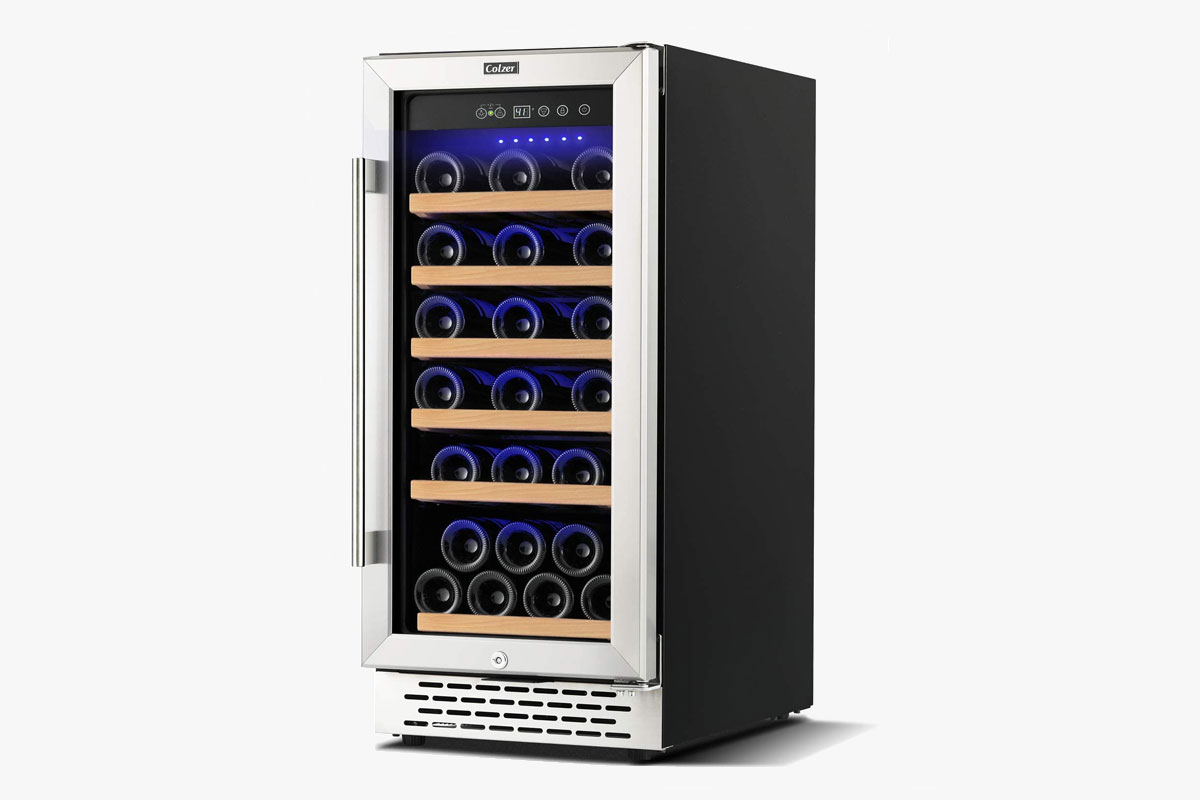 The Colzer Upgrade 15 Inch Wine Cooler
The Colzer Upgrade 15 Inch Wine Cooler
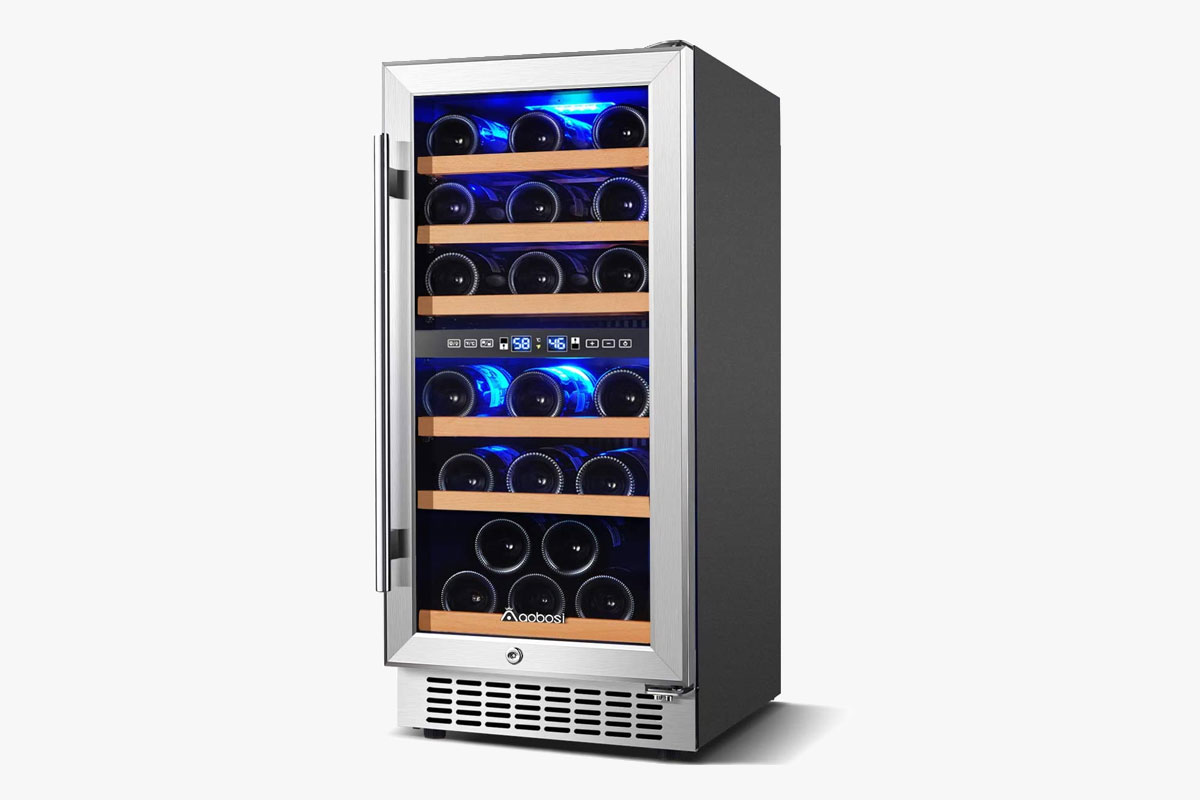 [Upgraded] Wine Cooler Dual Zone, Aobosi 15 inch 30 Bottle Wine
[Upgraded] Wine Cooler Dual Zone, Aobosi 15 inch 30 Bottle Wine
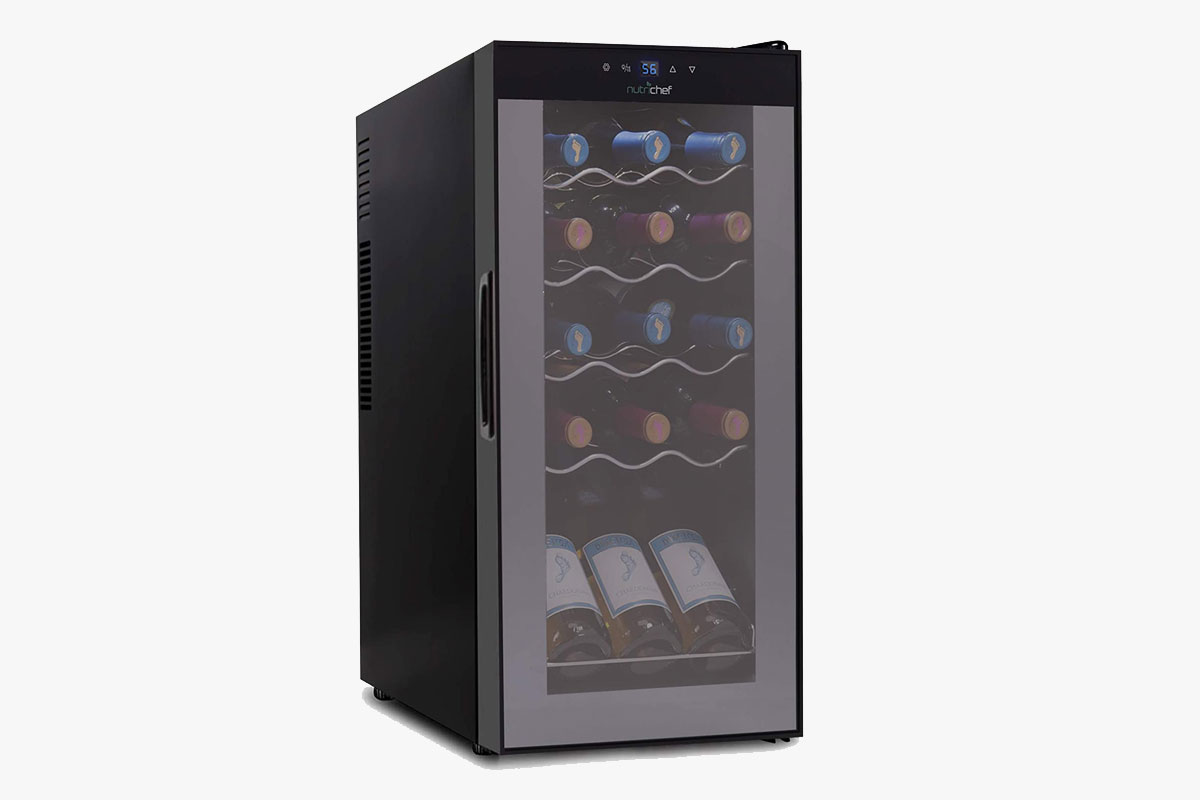 NutriChef 15 Bottle Wine Cooler Refrigerator
NutriChef 15 Bottle Wine Cooler Refrigerator
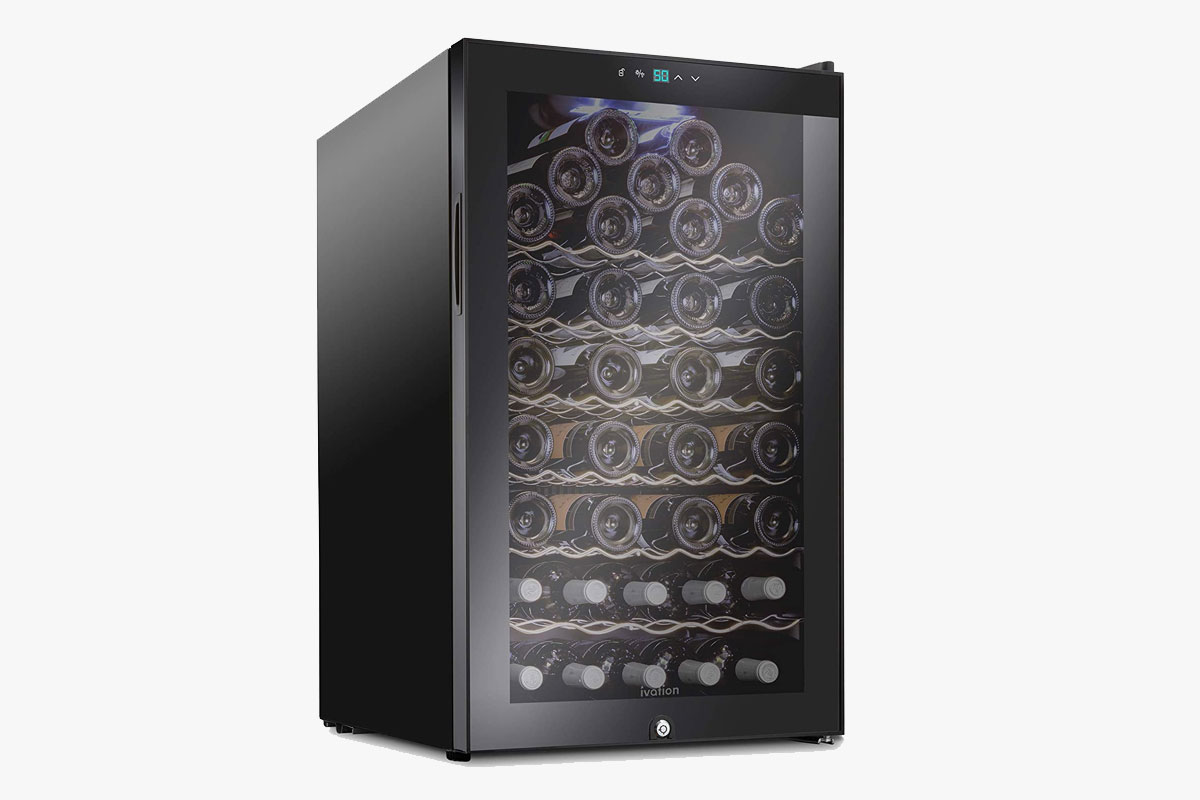 Ivation 51 Bottle Compressor Wine Cooler Refrigerator
Ivation 51 Bottle Compressor Wine Cooler Refrigerator
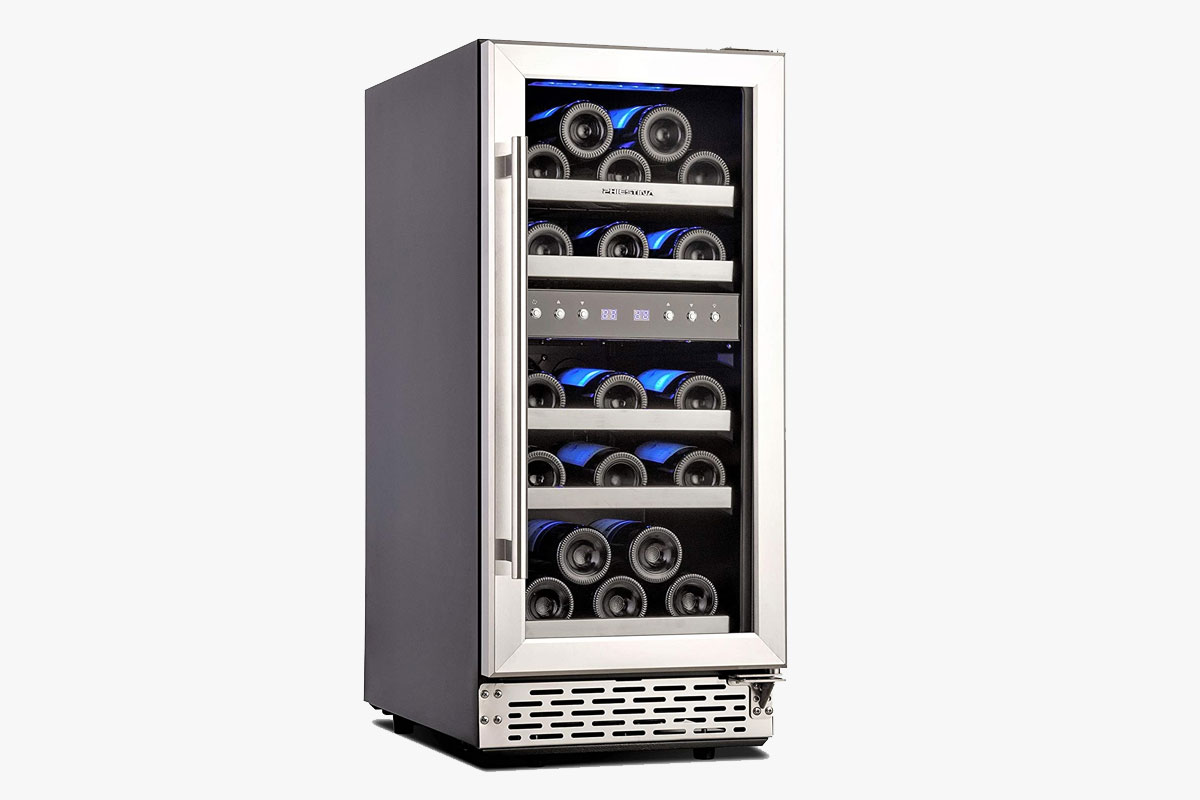 Phiestina 15 Inch Dual Zone Wine Cooler Refrigerator
Phiestina 15 Inch Dual Zone Wine Cooler Refrigerator
 hOmeLabs 43 Bottles High-End Wine Cooler
hOmeLabs 43 Bottles High-End Wine Cooler
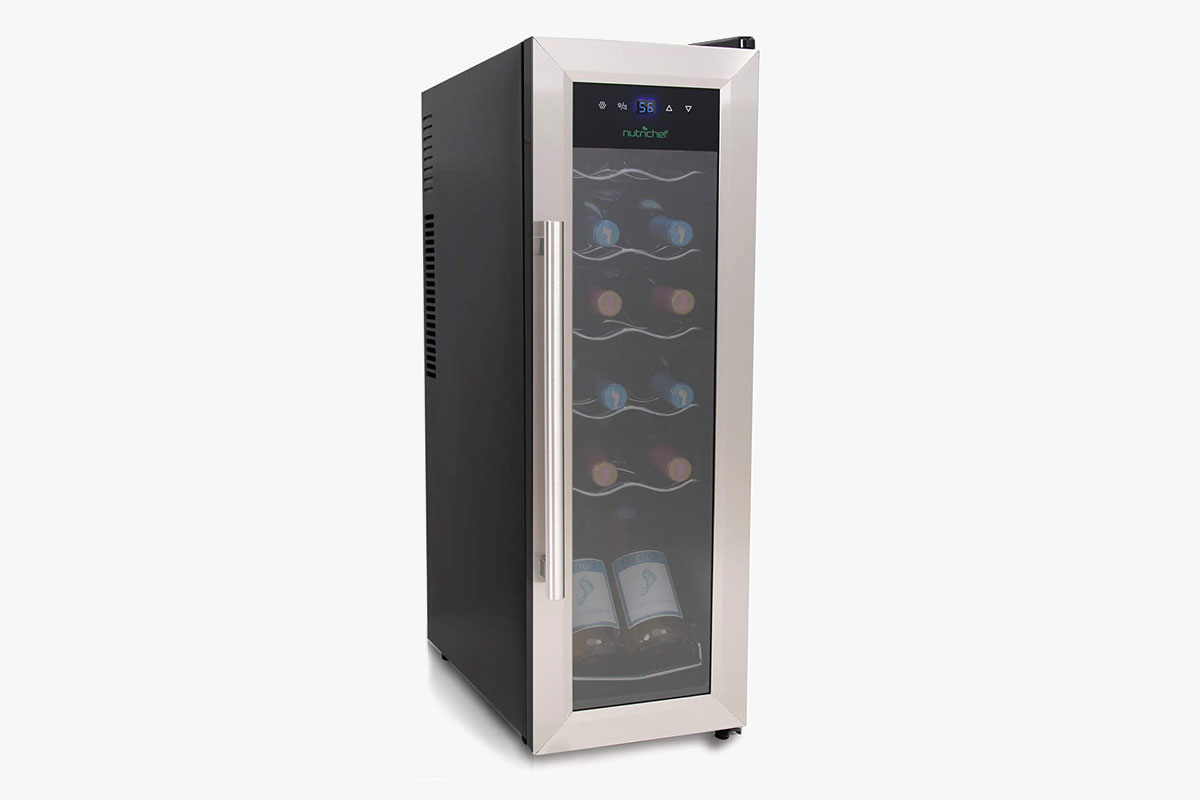 NutriChef PKCWC12 12 Bottle Wine Cooler Refrigerator
NutriChef PKCWC12 12 Bottle Wine Cooler Refrigerator
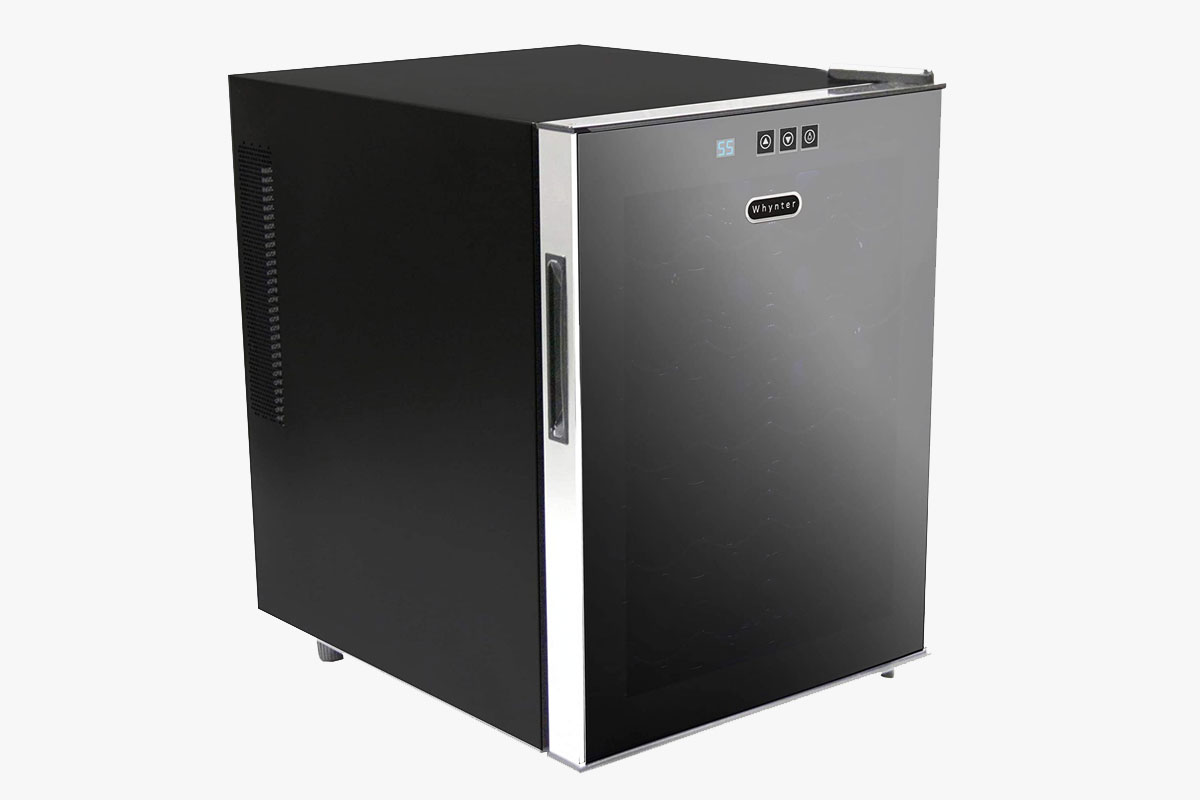 Whynter 20 Bottle Thermoelectric Wine Cooler
Whynter 20 Bottle Thermoelectric Wine Cooler
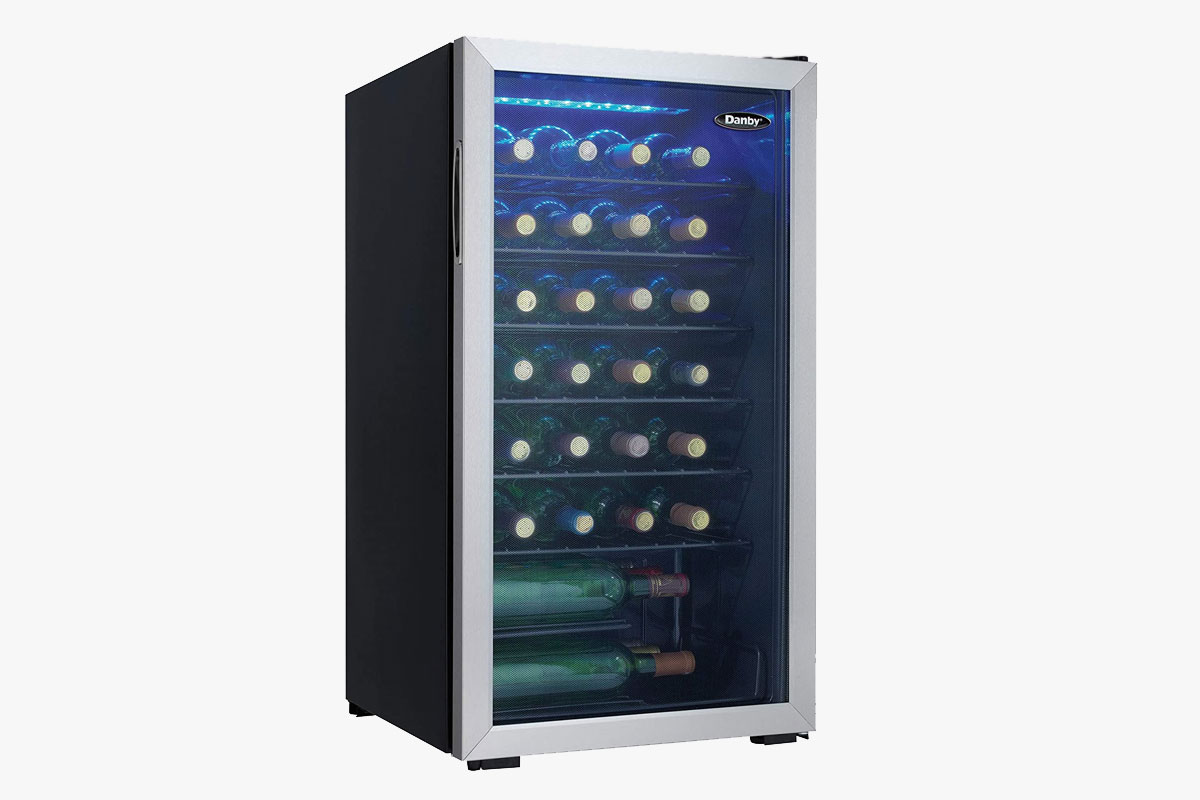 Danby DWC036A1BSSDB-6 Wine Cellar
Danby DWC036A1BSSDB-6 Wine Cellar
Wine Cooler Buying Guide & FAQ
Features to Look for in Wine Coolers
Wine Cooler FAQ
Why do I need a wine cooler?
At what temperature should I store wine?
What are the best conditions for aging wine?
Are wine coolers noisy?
Where is the best place to install a wine cooler?
How do I clean a wine cooler?
